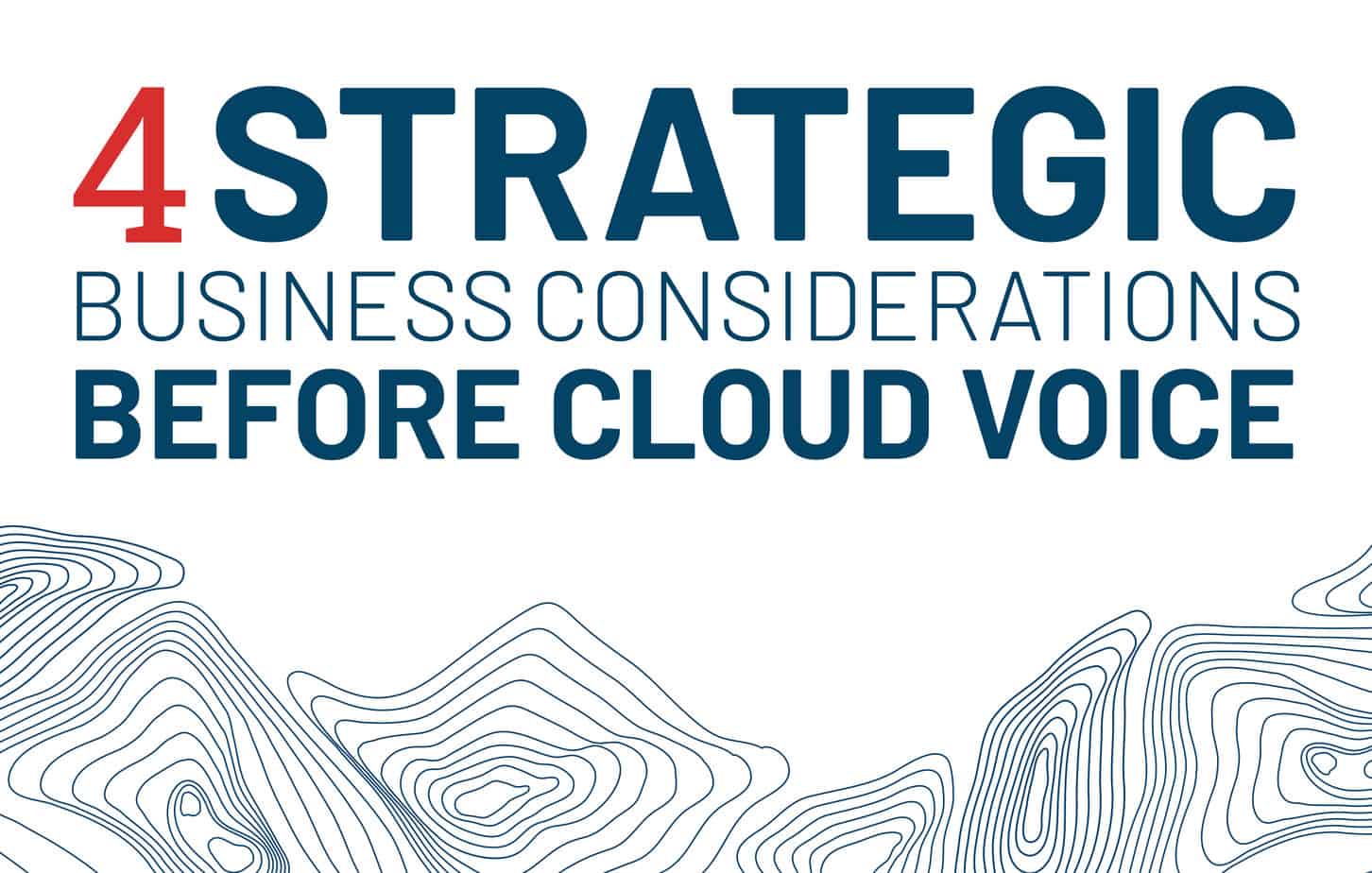
Organizations have come to realize the many advantages of utilizing a cloud-based communication system. However, before making the leap to the cloud, organizations need to take a focused look at their security, financial and deployment preferences and then move into assessing is their organization ready for cloud UC.
CONVERGENCE VS. SECURITY
Most, if not all, IT professionals agree that security is a top concern. Security breaches can create a vast amount of collateral damage in a short amount of time. Often times, CIOs must seal cracks and set up security measures before they can focus on strategic initiatives. At a certain point, the question becomes:
Do we keep voice and data separate for security reasons or converge for efficiency?
This decision is an essential step in determining whether a cloud voice solution is even a consideration for an enterprise organization. After the hurdle of convergence is met, the decision then shifts to financial evaluation.
FINANCIAL MODEL PREFERENCE
One business approach that is resonating with most CIOs and CFOs is the possibility of moving from a financial model based on capital expenditures (CapEx) to one built on operating costs (OPEX). In a typical cloud versus on-premise project, if the price and perceived value are similar, then the decision often comes down to the companies’ preferred financial structure.
DEPLOYMENT TYPE
Before opening the IT pocketbook, you should spend ample time determining which cloud is optimal for the business. Consider the following options:
1. Public cloud
Choosing a public cloud-based communication solution typically means you are getting the best bang for your buck because of the shared web-based infrastructure. Additionally, the flexible, on-demand nature of the cloud means that you can easily add or delete users and applications whenever necessary.
2. Private cloud
For companies looking for a cloud solution with more protection, a private cloud UC solution may be a better alternative to a public cloud. A private cloud solution can be hosted internally or externally through virtualization technologies—removing the security risks of public hosting.
3. Hybrid cloud
Because of the diversity and breadth required by today’s businesses, hybrid clouds are a common option for providing a customized and practical solution. With this option, organizations have the ability to choose where information is stored; sensitive data can reside on a private cloud, while productivity apps can live in the public cloud.
4. Hosted or managed services
The UC hosted and managed services market is well-developed. In a hosted or managed services agreement, companies typically purchase and own the technology, while the provider is responsible for installation and management.
NETWORK AND HARDWARE ASSESSMENT
Too many companies rush to deploy cloud voice only to realize several key areas have been overlooked in the process. To ensure a streamlined transition, examine the following areas prior to cloud voice implementation:
1. Proper Cabling
It may seem trivial, but many times businesses proceed with implementation assuming they have the appropriate cabling. Moving forward without the proper connections will likely increase the time and cost of your solution implementation. To safeguard against this, check your cabling first. You will need Cat5—preferably Cat6—cabling to achieve a satisfactory cloud voice experience.
2. Bandwidth Availability
For every 10 people in the office, assume two concurrent calls at 87 to 100 kilobits (Kbps) per call. So for example, if your business employees 100 people within the same office, you will require—at a minimum—1,740 to 2,000 Kbps in bandwidth availability at all times. Of course, you will need to be capable of accommodating busy times and unexpected events.
3. Quality of Service (QoS)
If your voice solution is on the same network with your computer systems, it may be beneficial to deploy switches for QoS, which will prioritize voice traffic over data traffic to ensure that calls go uninterrupted.
4. Handsets
Prior to transitioning to a cloud voice solution, it will be essential to evaluate handset requirements. Converting to VoIP requires a specific type of handset which can create unplanned expenses.
5. Headsets
Softphone utilization will require the use of headsets as well. Make sure you review the best headset option based on call quality and if the headset is compatible with the new system.